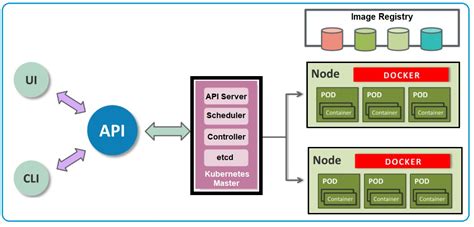
Containerization has become a linchpin in modern web deployment, revolutionizing the way applications are developed, tested, and deployed across various environments. This transformative technology, epitomized by Docker and Kubernetes, addresses longstanding challenges in software development and offers a range of benefits that are reshaping the landscape of web deployment.
Traditionally, deploying web applications was fraught with difficulties due to the complex dependencies and configurations associated with different environments. Developers faced the daunting task of ensuring that an application worked seamlessly across various platforms, from a developer’s laptop to production servers. Containerization addresses this issue by encapsulating an application and its dependencies into a lightweight, portable container. This container includes everything needed for the application to run consistently, regardless of the underlying infrastructure.
The fundamental unit of containerization is the container, a standardized, standalone executable package that includes everything needed to run an application, such as the code, runtime, libraries, and system tools. This encapsulation promotes consistency and eliminates the infamous "it works on my machine" problem. Developers can confidently move containers between development, testing, and production environments, streamlining the deployment process and reducing the likelihood of configuration-related issues.
Moreover, containerization enhances scalability and resource utilization. Containers share the host operating system’s kernel, which makes them lightweight and resource-efficient. Unlike virtual machines, containers do not require a full operating system stack for each instance, leading to faster startup times and greater flexibility in allocating resources. This efficiency is particularly crucial in modern web applications where scalability and responsiveness are paramount.
Docker, a leading containerization platform, simplified the adoption of containers by providing a user-friendly interface and tools for building, managing, and distributing containers. Docker’s popularity contributed to the widespread adoption of containerization in the development community. Developers could now focus on building features rather than grappling with the intricacies of deployment, making the entire process more developer-friendly.
However, as the scale of applications grew, orchestrating and managing containers across a distributed environment became a challenge. Enter Kubernetes, an open-source container orchestration platform that automates the deployment, scaling, and management of containerized applications. Kubernetes builds on the containerization foundation laid by Docker, providing a robust framework for orchestrating complex, microservices-based architectures.
The rise of microservices architectures further underscores the significance of containerization. In a microservices environment, applications are composed of loosely coupled, independently deployable services. Containers facilitate the isolation of these services, enabling developers to build, test, and deploy each microservice independently. This modular approach enhances agility, as updates and changes can be made to individual services without affecting the entire application.
In summary, containerization has transformed web deployment by offering a standardized, portable, and efficient solution to the challenges associated with deploying complex applications across diverse environments. The synergy between Docker and Kubernetes has propelled containerization into the mainstream, providing developers with powerful tools to streamline development workflows, improve scalability, and embrace modern architectural paradigms like microservices. As the tech landscape continues to evolve, containerization stands as a cornerstone in the foundation of efficient, scalable, and reliable web deployment.